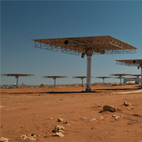Advancements & Achievements« Back to Advancements & Achievements Listings

IDC Helps Fund South Africa's Engine of Innovation
The IDC was established by an Act of Parliament to address the shortages of manufactured goods resulting from the disruption of trade between Europe and South Africa during World War II.
For more than 70 years, the IDC has been instrumental in implementing South Africa’s industrial policy, establishing or supporting some of the country’s key manufacturing industries, including the petro-chemicals and minerals beneficiation industries, as well as fabricated metals, agro industries, clothing and textiles.
The core development funding interventions of the IDC are carried out by 13 strategic business units, each aligned to the sectors identified through the various iterations of government policy. The latest of these is the National Development Plan, which has been broadly adopted by government, business and labor, albeit with some reservations, notably from organized labor.
The IDC’s strategic business units span three broad categories of economic activity:
- First are agro and new industries. Here the IDC includes agro industries, green industries, strategic high-impact projects and venture capital;
- Second is mining and manufacturing. This includes chemicals and allied industries, forestry and wood products, metals, transportation and machinery products, mining and mineral beneficiation, and textiles and clothing.
- Third are the service industries, which include ICT, health care, media and motion pictures, and tourism.
To fund its activities, the corporation relies on funds generated from its loan and equity investments, exits from mature investments, as well as borrowing from commercial banks, development finance institutions and other lenders.
In the 1990s, the IDC’s mandate was expanded to allow investment in the rest of Africa with the first venture seeing the establishment of an aluminium smelter in the neighboring state of Mozambique, which was recovering from a debilitating civil war. Current investments elsewhere on the continent include mining, agriculture, manufacturing, tourism and telecommunications.
In the wake of the global financial crisis, the IDC’s mandate was again broadened to help the country respond to the global economic recession that followed. In the words of Ebrahim Patel, South Africa’s Minister of Economic Development and the responsible government official, this was to be done by supporting government efforts to develop a new growth plan for the local economy; increasing the level of industrial funding; becoming more responsive to the needs of IDC users; and by retooling itself to play a stronger developmental and empowering role.
“Development is not measured simply by financial indicators,” Patel says. “We also expect the IDC to show its value in how well it is expanding the country’s industrial capacity and, though those efforts, its impact on jobs and economic inclusion.”
Although the IDC’s priorities have evolved over the years in line with South African government policy directives, its basic mandate remains unchanged—namely to industrialize South Africa and enhance job opportunities. And as the country’s largest development finance institution, it is a critical national asset.
The IDC’s performance indicators are quite impressive. Since 2009, the value of new investments by the IDC has grown significantly, and total assets for the group at market value rose from $8.9 billion to $12.7 billion (USD).
In the past four years, the IDC approved $4.5 billion in project finance in equity and loans. Disbursements to partner companies amounted to $3.6 billion, doubling what was achieved over the previous four years. The IDC generated profits of $1 billion over the past four years, and its contribution to the state in the form of income and capital gains taxes and dividends was more than $80 million.
Year over year, the IDC points to a number of key achievements in its latest annual report. They include:
- Increased traction in the implementation of projects approved in previous years, with funding disbursements increasing by 91 percent to $1.6 billion compared to R1.35 billion in 2012
- Maintaining high levels of funding approvals, with $1.31 billion compared to $1.35 billion the previous year
- The IDC was appointed to coordinate planning for the Saldanha-Northern Caper Corridor and the Green Economy Strategy Integrated Projects as part of the government’s infrastructure development program.
- Strong financial returns with group profits before tax of $200 million compared to $330 million in 2012
In line with its expanded mandate, the IDC has shifted its investments into areas identified as strong growth and jobs drivers.
According to Minister Patel, “The IDC’s overall funding over the four-year period supported the creation of 90,000 new direct formal sector jobs and more than 8,000 jobs in the informal economy and saved a further 35,000 existing jobs, bringing the overall employment impact to more than 133,000 direct jobs.”
Looking forward, the chair of the IDC, MW Hlahla, says the leading role that the IDC envisions playing in the development of industrial capacity in South Africa and the continent is firmly entrenched in the corporation’s planning for 2014–2017.
“Integral to this multi-year strategy are our commitments toward industrial rejuvenation, growth and improved competitiveness. Furthermore, we aim to contribute meaningfully to the structural transformation of our economy, employment creation and toward a more egalitarian or fair flow of the benefits of national wealth creation in South Africa,” Hlahla says.
This includes assisting existing businesses to counter the adverse effects of competitive forces in local, regional and global markets.
“The clothing and textile industries are cases in point,” Hlahla says. “IDC interventions alongside other forms of state support appear to be succeeding in stabilizing their performance, retaining productive capacity and safeguarding employment.”
She says strategic relationships with key stakeholders are essential for success in implementing the IDC’s expanded mandate.
“We are building stronger partnerships with other state entities, and closer ties are being developed with private-sector players across the board, including industry associations.”

